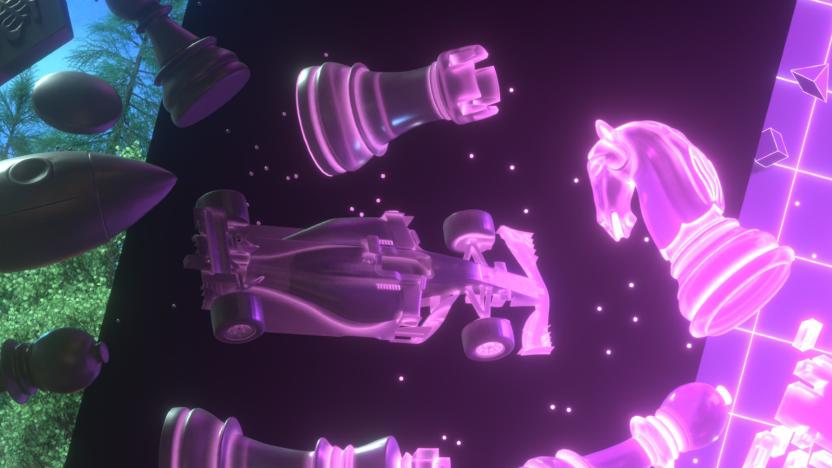neural networks
Latest

DeepMind's latest AI can master games without being told their rules
In 2016, Alphabet's DeepMind came out with AlphaGo, an AI which consistently beat the best human Go players. DeepMind then created AlphaZero, which could play Go, chess and shogi with a single algorithm. DeepMind's latest AI, MuZero, didn't need to be told the rules of go, chess, shogi and a suite of Atari games to master them.

Neon’s ‘artificial human’ avatars could not live up to the CES hype
Neon and its "artificial human" avatars were the first viral hit of CES. They had everything to get the internet excited: a corporate giant (the company is from Samsung's STAR Labs), buzzwords (Avatars! Realistic AI assistants!) and confusion. Redditors combed the internet for details, and YouTube channel Good Content pulled together a surprisingly comprehensive dossier on a company that's barely half a year old. Neon then officially announced itself to CES in a press release rich in hyperbole, complicated machine learning jargon and a pretty opaque mission statement. There was also the promise of Neons "reacting and responding in real-time." I had to see it for myself.

MIT made an AI that can detect and create fake images
Creating digital renderings and editing images can take hours, but researchers from MIT and IBM want to change that. They've trained AI to generate photographic images from scratch and to intelligently edit objects inside them. While this could be beneficial for artists and designers, it also offers insight into how neural networks learn context, and the team hopes to leverage the tool to spot fake or altered images.

FaceApp changes your race with its latest selfie-editing filters (update)
FaceApp uses neural networks for realistic-looking changes to your selfie photos. Originally, it had filters to add smiles, change your age, change gender or "beautify" your face. Unlike Snapchat's overlays, FaceApp uses deep learning technologies to change the photo itself. Now, a new update adds race to the mix, with an update to enable users to make themselves look Asian, Black, Caucasian or Indian.

Artificial intelligence could be used to stop car smugglers
Chances are, you don't spend a lot of time thinking about the logistics of international shipping -- but you shouldn't be surprised that transportation hubs are ripe for export fraud. Part of the reason for this is that there's simply too much international cargo moved each month to be manually checked with human eyes. The solution? Teach a computer to inspect that cargo for you.

DNA-based artificial neural network is a primitive brain in a test tube (video)
Many simpler forms of life on this planet, including some of our earliest ancestors, don't have proper brains. Instead they have networks of neurons that fire in response to stimuli, triggering reactions. Scientists from Caltech have actually figured out how to create such a primitive pre-brain using strands of DNA. Researchers, led by Lulu Qian, strung together DNA molecules to create bio-mechanical circuits. By sequencing the four bases of our genetic code in a particular way, they were able to program it to respond differently to various inputs. To prove their success the team quizzed the organic circuit, essentially playing 20 questions, feeding it clues to the identity of a particular scientist using more DNA strands. The artificial neural network nailed answer every time. Check out the PR and pair of videos that dig a little deeper into the experiment after the break.

British researchers design a million-chip neural network 1/100 as complex as your brain
If you want some idea of the complexity of the human brain, consider this: a group of British universities plans to link as many as a million ARM processors in order to simulate just a small fraction of it. The resulting model, called SpiNNaker (Spiking Neural Network architecture), will represent less than one percent of a human's gray matter, which contains 100 billion neurons. (Take that, mice brains!) Yet even this small scale representation, researchers believe, will yield insight into how the brain functions, perhaps enabling new treatments for cognitive disorders, similar to previous models that increased our understanding of schizophrenia. As these neural networks increase in complexity, they come closer to mimicking human brains -- perhaps even developing the ability to make their own Skynet references.

Schizophrenic computer may help us understand similarly afflicted humans
Although we usually prefer our computers to be perfect, logical, and psychologically fit, sometimes there's more to be learned from a schizophrenic one. A University of Texas experiment has doomed a computer with dementia praecox, saddling the silicon soul with symptoms that normally only afflict humans. By telling the machine's neural network to treat everything it learned as extremely important, the team hopes to aid clinical research in understanding the schizophrenic brain -- following a popular theory that suggests afflicted patients lose the ability to forget or ignore frivolous information, causing them to make illogical connections and paranoid jumps in reason. Sure enough, the machine lost it, and started spinning wild, delusional stories, eventually claiming responsibility for a terrorist attack. Yikes. We aren't hastening the robot apocalypse if we're programming machines to go mad intentionally, right?






